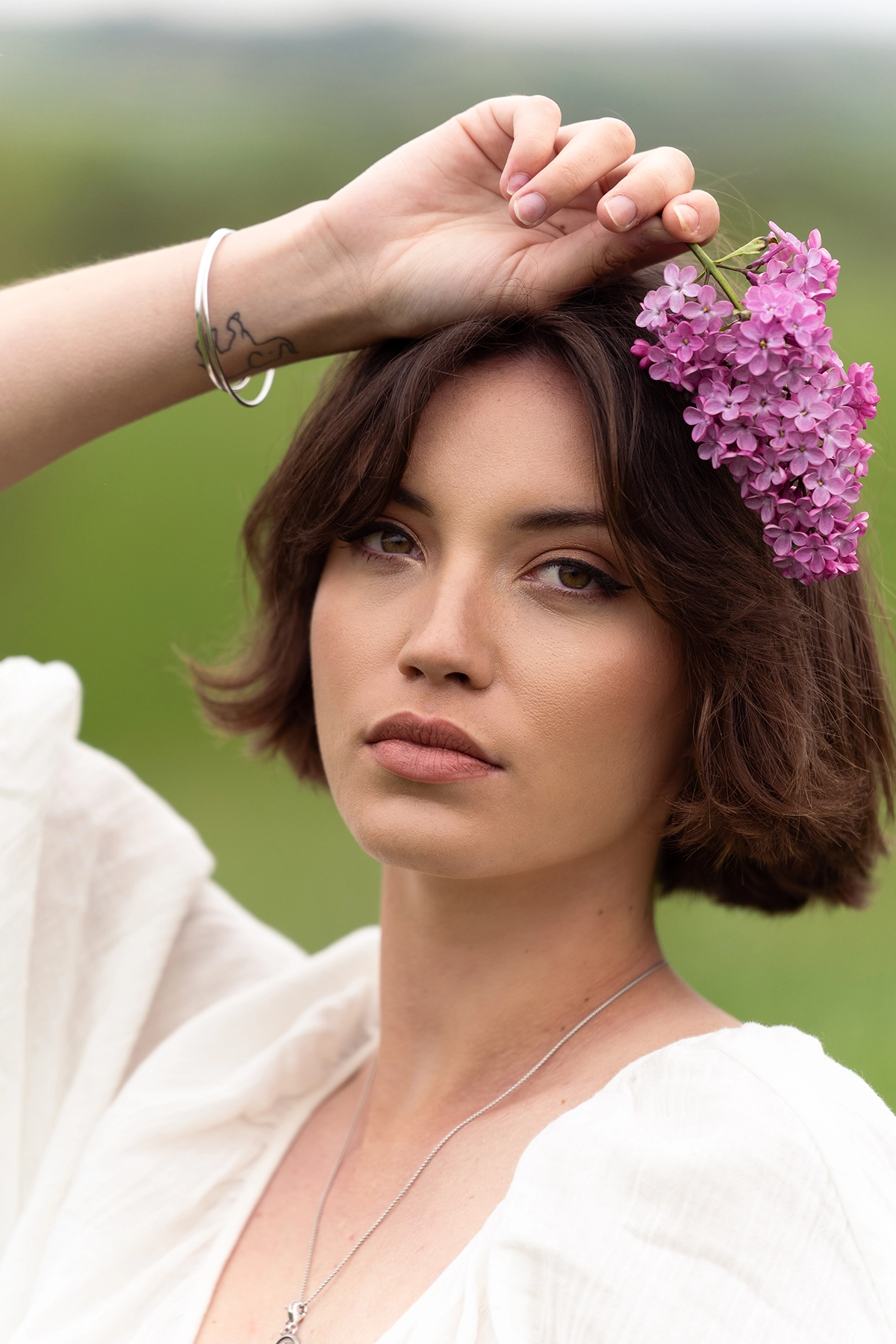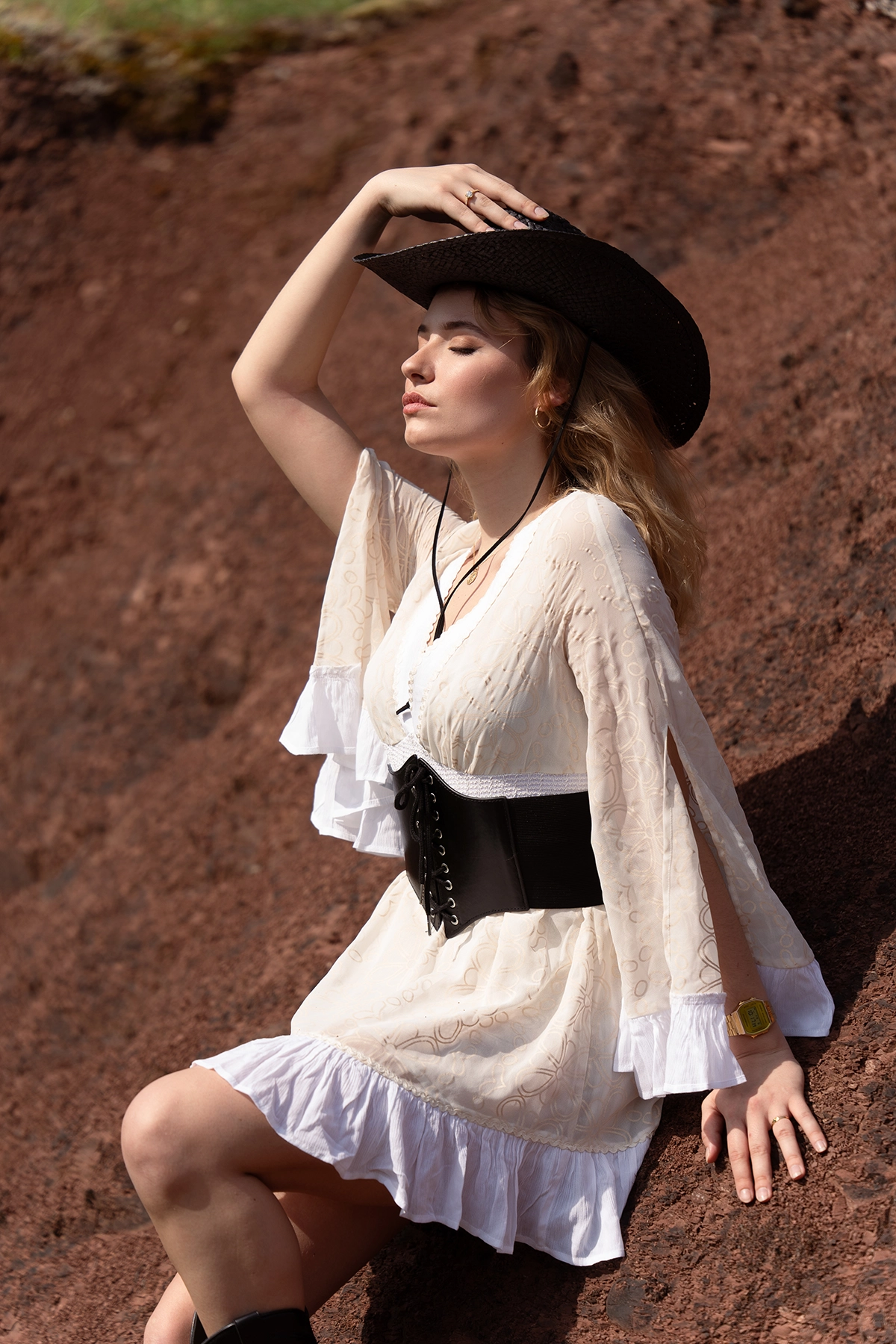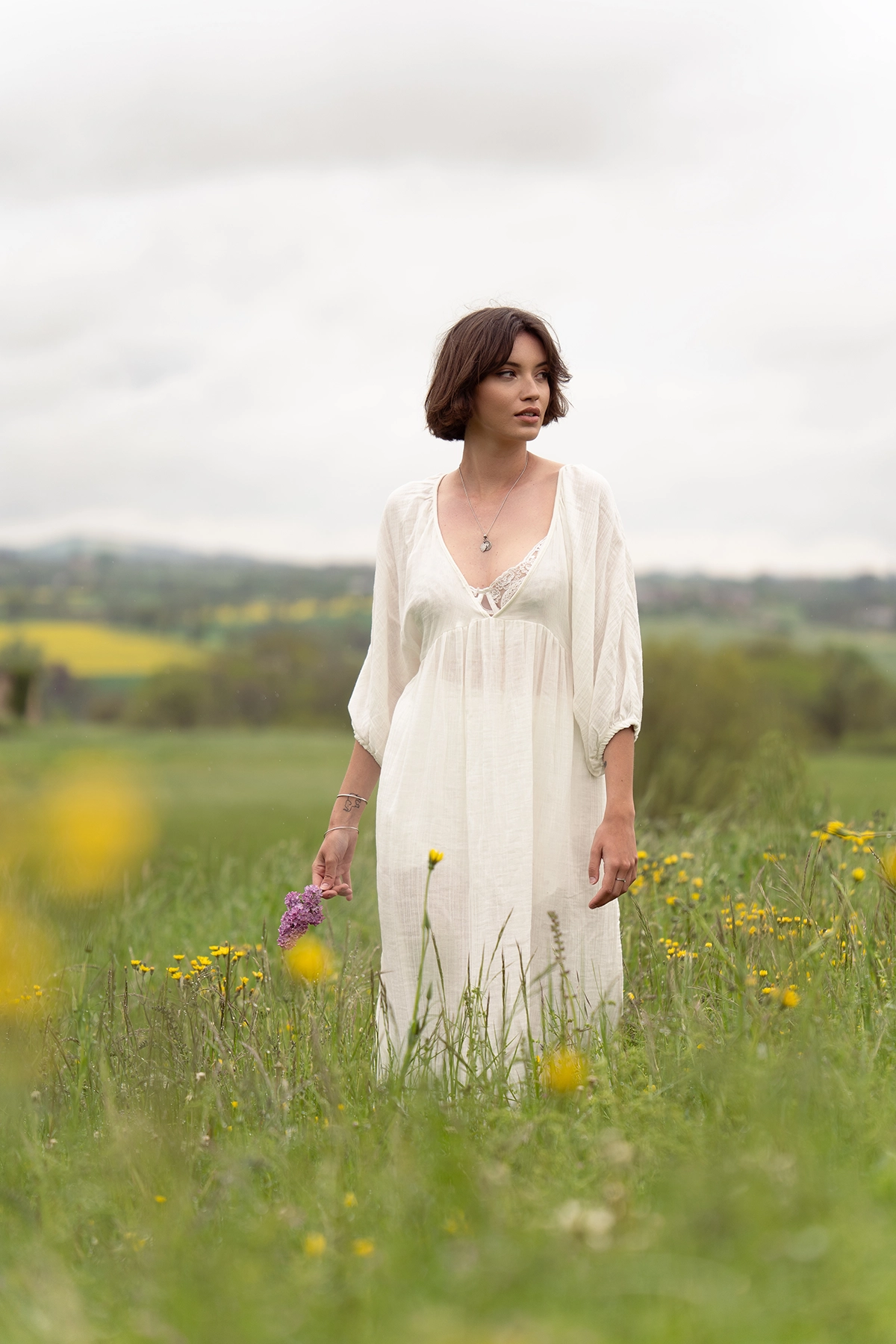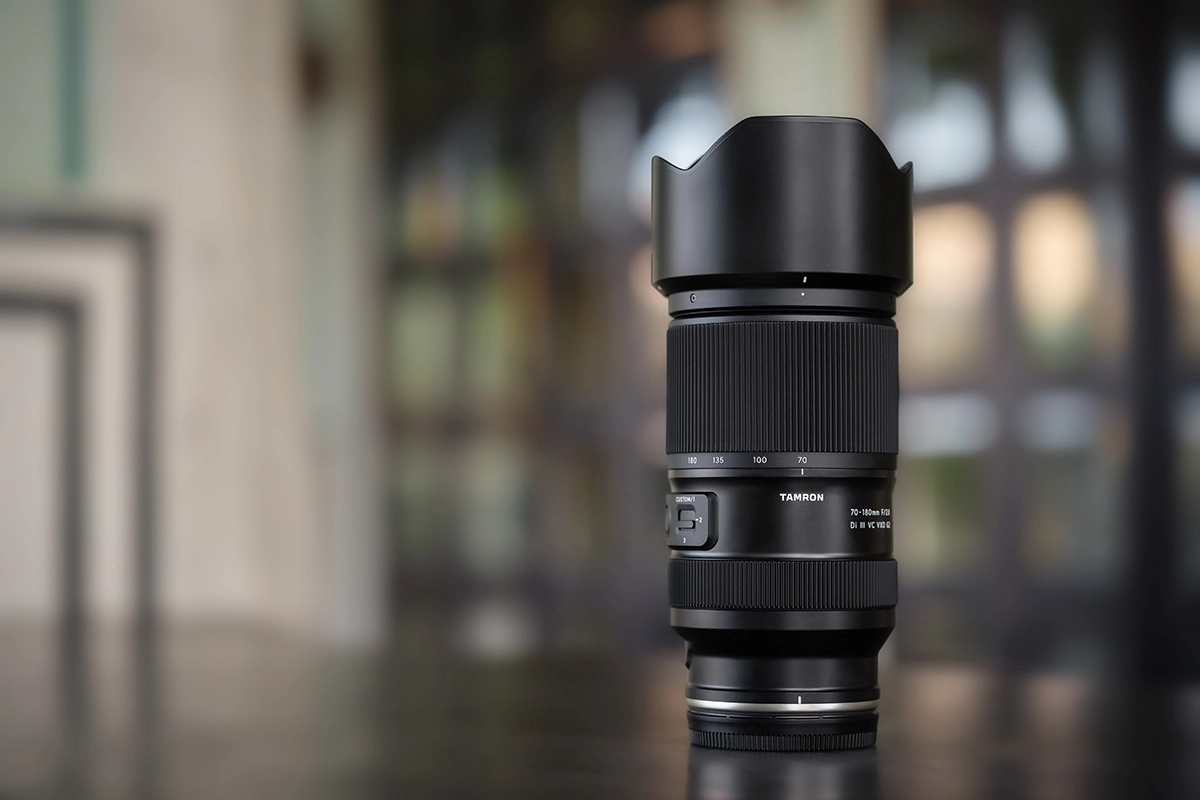Portrait photographer Tony Boussemart takes us through his hands-on Tamron 70-180 G2 review, sharing his real-world portrait-shooting experience with the Tamron 70-180mm F/2.8 Di III VC VXD G2, a lens often compared against classic 70-200mm lenses for those wondering about 180mm vs 200mm in practical use.
In this article, Tony’s field report helps photographers understand why this lightweight 70-200mm-equivalent zoom F2.8 has become one of the best lenses for portrait photography in the Sony E and Nikon Z ecosystems.
By Tony Boussemart
What You’ll Learn In This Article:
- Why the Tamron 70-180mm F2.8 G2 has become a favorite among portrait photographers
- How the lens handles and performs as a Tamron 70-180mm G2 portrait lens in real shooting conditions
- The benefits of the wide F2.8 aperture for bokeh, sharpness, and low-light portrait work
- How the 70–180mm range compares to a traditional 70–200mm (180mm vs 200mm)
- Key Tamron 70-180mm G2 features that make it a strong alternative in the best lenses for portrait photography 70-180mm category for Sony E-mount and Nikon Z mount cameras
Tamron 70-180 G2 Review: First Impressions & Handling

As expected, Tamron has created a sober and minimalist lens, the Tamron 70-180mm F/2.8 Di III VC VXD G2 (Model A065) for Sony E-mount and Nikon Z mount—simply and elegantly designed, to my great pleasure! I also appreciate its lightness, which makes it easy to carry around and to use during my portrait shoots. Ergonomically, it has been very well thought-through, as its focus ring adjusts with ease and precision. The zoom ring is fluid and enjoyable to use—it is easy to play around with. The adjustment is moderate, making it easy to make the transition from 70 to 180mm. It is overall very nice to use, and I feel confident when shooting.
Why It Matters:
Good handling and low weight help photographers shoot longer and more comfortably, especially during portrait sessions.
Tamron 70-180 G2 Review: F2.8 Aperture and Low-Light Results

By using this lens, I immediately noticed its maximum aperture of F2.8. This characteristic is very important in portrait photography, as it allows me to capture a lot of light, even in poorly lit conditions. This means I was able to take clear and well-exposed portraits, even when the lighting was weak or when I needed to use slower shutter speeds. This wide aperture is very practical and allowed me to take high-quality portraits without having to worry about the ambient light.
Why It Matters:
A constant F2.8 aperture ensures better low-light performance and cleaner images without raising ISO.
Tamron 70-180 G2 Bokeh: Real-World Portrait Results

Furthermore, the wide aperture of this lens allows the photographer to create gorgeous bokeh. The bokeh—also known as soft focus—is very important for portrait photography since it gives the image a nice depth and artistic aspect. This lens allowed me to create very creamy bokeh that is pleasant to the eye, adding a little something more to my portraits.
Why It Matters:
Smooth bokeh helps isolate subjects and gives portraits a polished, professional look.
Tamron 70-180mm G2 for Portraits: Focal Range Versatility

The focal range covering 70 to 180mm is also perfectly adapted to portrait photography. This focal range is very versatile and allowed me to capture portraits from different distances without having to move around. This gave me great flexibility in capturing portraits in different ways and allowed me to create interesting compositions. I was able to take close-up shots of my subjects with the 70mm focal length, whereas I was able to use the 180mm focal length to take portraits from farther away without sacrificing the quality of my work.
Why It Matters:
The 70–180mm range offers flattering compression and flexible framing without changing lenses.
Tamron 70-180 G2 Sharpness: Portrait Detail & Texture

The lens sharpness is simply “INCREDIBLE,” and I’m choosing my words carefully. I tried this gem with my 5-year-old α7 III, and despite that, I was surprised by how sharp and precise my subject’s details appeared, even at the 180mm tele-end and at an aperture of F2.8. The textures are rendered with great clarity and detail, which adds a complementary dimension to my portraits. This also facilitated the editing process, since I can use the clarity of the photos to reinforce the details and textures of my portraits.
Why It Matters:
High sharpness ensures crisp eyes, detailed textures, and better results during retouching.
Key Tamron 70-180mm G2 Features

The Tamron 70-180mm F2.8 G2 builds on the success of the original version with upgrades that benefit portrait photographers and hybrid shooters alike. These enhancements position it strongly when comparing the Tamron 70-180mm G2 vs 70-200mm lenses across brands, especially for those wanting a lightweight 70-200mm equivalent zoom F2.8.
Key Features Include:
- Exceptional blend of portability and reach for portrait photography
- Constant F2.8 aperture for low-light performance and depth-of-field control
- VC image stabilization for improved handheld shooting
- Fast VXD linear motors for responsive, accurate autofocus
- Refined optical construction that improves detail, texture reproduction, and edge-to-edge clarity
- BBAR-G2 coating to reduce flare and ghosting, ideal for clean, contrast-rich backlit portraits.
- Close-focusing capability perfect for creative detail portraits
- 67mm filter size shared across most Tamron mirrorless lenses, making it easy to use the same filters and caps across your kit.
- Moisture-resistant construction for added durability during outdoor portrait sessions.
- Fluorine-coated front element that repels fingerprints and smudges for easier cleaning.
- Available for Sony E-mount and Nikon Z mount
- Member of the Tamron G2 holy trinity when paired with the 28-75mm F2.8 G2 and 16-30mm F2.8 G2, covering essential focal lengths for modern portrait work.
Tamron 70-180 G2 Review: Final Verdict for Portrait Photographers
To conclude, I highly recommend this lens to all portrait photographers. This Generation 2 of Tamron’s 70-180mm F2.8 has nothing to do with its previous version. The sharpness, the bokeh, and the focal range are perfectly adapted to my portrait photography practices and allowed me to capture incredible portraits. Now that I’ve tested it out, I HAVE to buy it! If you’re looking for a quality lens for your portrait shoots, believe me, this is the one you need!
Whether you’re a portrait photographer seeking a lightweight telephoto zoom or a Sony shooter looking to elevate your lens lineup, the Tamron 70-180mm F/2.8 Di III VC VXD G2 offers an exceptional balance of performance, portability, and creative potential.
More Lens Reviews of the Tamron 16-30mm F/2.8 Di III VXD G2
Tamron 16-30mm G2 Review: Hands-On with the F2.8 Ultra Wide-Angle Lens
Yoshiki Fujiwara Captures the Yukon & Alaska with the Tamron 16-30mm G2
Where to Buy Tamron Lenses
Learn more about the Tamron 70-180mm G2 for Sony E and Nikon Z mount and more lenses at an authorized Tamron dealer near you or shop directly at the official TAMRON Store.
About Tony Boussemart

Tony Boussemart, AKA Tone, is an image specialist. A photographer and filmmaker since the age of 17, he is one of the people who have the chance to live their passion. He was attracted by art very early in life. At eight, it is with the help of charcoal and pastels that he expresses himself, then as a teenager, he discovers the musical universe. It is in this environment that Tone found his professional path by putting his own songs into images. Whether through photos or videos, Tone relays messages, emotions whether they are those of artists, brands, or ordinary people. As he sums it up so well, “the magic is not in the hand of the magician, but in the eye of the beholder”. By being behind the lens, Tone puts his talent at the service of all those who need to convey a message through images or simply to keep a memory of precious and unforgettable moments in their lives. Website | Facebook | Instagram | YouTube
Frequently Asked Questions About Using the 70-180mm For Portrait Photography
Q1: Is the Tamron 70-180mm F2.8 G2 good for portrait photography?
Yes. The Tamron 70-180mm F2.8 G2 is one of the best lenses for portrait photography thanks to its flattering telephoto compression, fast F2.8 aperture, and creamy bokeh. It delivers sharp, professional-quality results across the entire zoom range.
Q2: Does the Tamron 70-180mm G2 create good bokeh for portraits?
Absolutely. The Tamron 70-180mm G2 bokeh is known for being smooth, soft, and aesthetically pleasing. At 180mm F2.8, the lens produces strong background separation ideal for headshots and fashion portraits.
Q3: How does the 180mm reach compare to a traditional 200mm portrait lens?
When comparing 180mm vs 200mm, the difference in real-world portrait shooting is minimal. The Tamron 70-180mm G2 offers similar compression and subject isolation to a 70-200mm lens while remaining more compact and lightweight.
Q4: Is the Tamron 70-180mm F2.8 G2 sharp enough for high-resolution portrait cameras?
Yes. The Tamron 70-180mm G2 sharpness is excellent, even wide open. It performs well on high-megapixel bodies, delivering crisp detail in eyes, skin texture, and hair—ideal for beauty and editorial work.
Q5: How well does the Tamron 70-180mm G2 autofocus perform in portrait sessions?
The G2 features improved VXD autofocus motors, offering fast, quiet, and reliable tracking. It pairs extremely well with Sony’s Eye AF, making it highly dependable for portraits, even with moving subjects.
Q6: Is the Tamron 70-180mm F2.8 G2 a good lightweight alternative to a 70-200mm lens?
Yes. This lens is considered one of the best lightweight 70-200mm equivalent zoom F2.8 options. It offers similar reach and performance to a traditional 70-200mm while being significantly more portable—perfect for on-location portrait photographers.
Q7: Does the Tamron 70-180mm G2 work well on Sony E-mount and Nikon Z?
The G2 now supports Sony E-mount and Nikon Z, making it accessible to more portrait shooters. Both versions deliver the same optical quality, stabilization, and features.
Q8: Is the Tamron 70-180mm G2 good for low-light portrait photography?
Yes. The constant F2.8 aperture combined with VC stabilization allows photographers to shoot in dim environments with less motion blur and lower ISO, making it ideal for indoor portraits, events, and golden-hour sessions.

